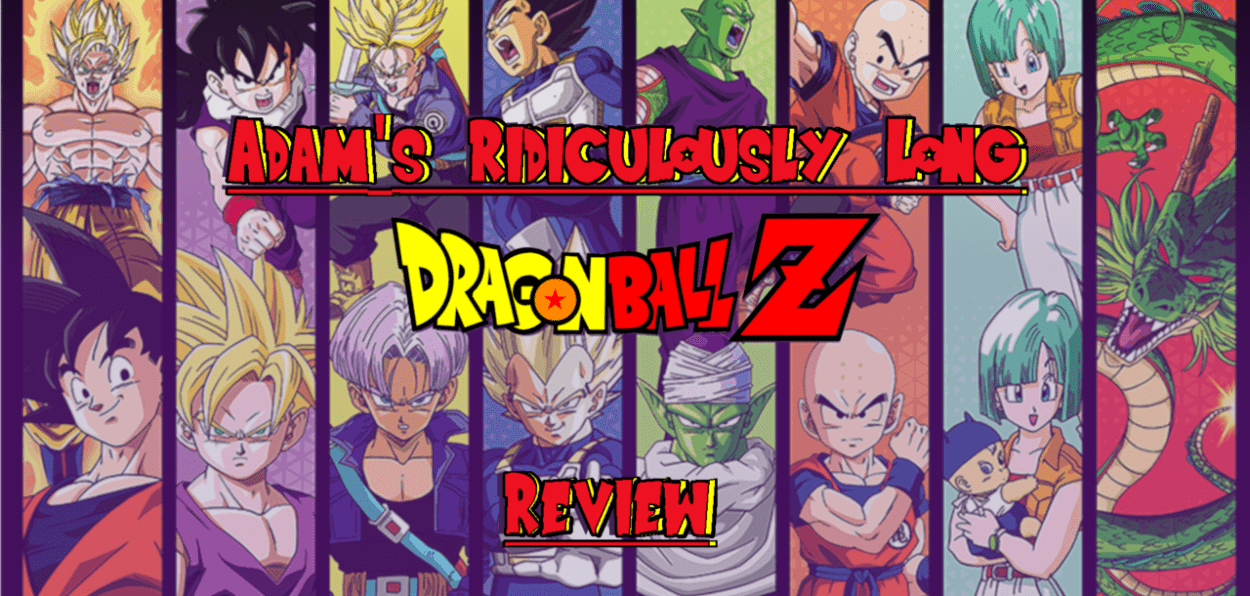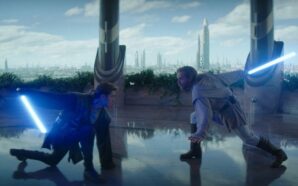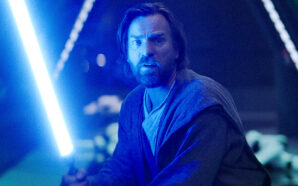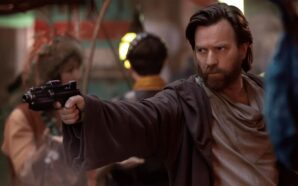This is an excellent season. I love the way it builds and really twists what we thought we knew as an audience. Watching the characters grapple with the shift in circumstances is really interesting. With several of the “lesser lights” getting a chance to really get involved and develop the story. We see the best and the worst of several characters over the course of events too. There’s a lot of moving parts and thankfully very little in the way of filler. In short, there is plenty to talk about.
Season Four ended with a lot of bruised egos and broken bones but surprisingly few deaths. The Z fighters got handily wrecked by Android’s 17 & 18 but weren’t killed as Future Trunks had predicted. You see, time travel is a complex beast and so it is the case here. It turns out travelling back in time doesn’t change the future you came from, it changes the future of the world you’ve travelled to. Parallel timelines you’ve crossed between. Each time you time travel, you enter another timeline that is similar but different to the one you left. Worst of all though, it turns out Trunks isn’t the only person to have used a Time Machine. Someone, or something, else had travelled to this time too. Only they arrived a year earlier than Trunks did the first time. Who are they and what have they been doing since they arrived? Why have they come to this time at all? These questions and their answers quickly become the focus of the season. Setting up some intriguing battles along the way. Complicated stuff to be broadcasting on kids TV – as this was in the early 2000’s. That’s not to mention the fact that the Androids are actually kidnapped humans turned into cyborgs while Cell is a genetically modified being and all the trademark violence. I don’t think I really understood what was going on as a kid, I followed it fine but I probably didn’t grasp fully the concepts explored the first time around. Artificial life, time travel, parallel universes, these are big and complex concepts to grapple with and the show does a surprisingly good job of doing so without getting too bogged down in details.
Let’s start with Piccolo, as far as the Z fighters go he’s the most heavily involved in driving events forward this season. Where the likes of Krillin & Tien are reactive to events, both having important interventions in proceedings, Piccolo stands alongside Goku & Vegeta in being an active character in moving the narrative forward. He starts on the lookout seeking to fuse with Kami. They have a long history but the short version is that they were once a single person who split into two halves. By combining together once again they will become multiples of times stronger as they were in the distant past. The stand off between the urgency of Piccolo and the patience of Kami gives us a fascinating insight into both. After the events of the prior season it’s easy to think Piccolo is right. Kami needs to let go of his pride and fuse with him right away, before the Androids reach the still ill Goku or go on a rampage. How far the formerly evil Piccolo has come over the series. Here he is practically begging for the help of Kami so that he can save his former nemesis, and the world. Kami initially refuses which seems like madness. From Piccolo’s perspective it looks like a stubborn old fool being too proud to be selfless despite being the “Guardian of the Earth”. In Kami we learn that perspective is important, especially when it comes to saving the world, the big picture needs to be considered too. Something Piccolo has lost sight of in his urgency, getting himself too wrapped up in the moment.
It becomes clear that something far worse than the Androids is in the offing. It’s been brewing for a while and now it has started to get involved. We meet Cell, Imperfect Cell to be precise, and he’s on the hunt for the Androids. He needs them to become complete, to become “Perfect”. One thing Akira Toriyama is very good at is introducing a villain. Each introduction has been different but suited to the character in question. Cell in particular is pretty terrifying. Where Frieza was a classic, uncaring ruler type with a distinctive sadistic streak during his introduction. Cell is a motivated monster. Killing indiscriminately, lurking in the shadows, leaving a trail of empty clothes where people used to be. It takes a few episodes before we even see what he looks like which really adds to the sense of unease and tension that builds in those early episodes. For a more detailed look at Akira Toriyama’s successes and failures in introducing his villains across all of the Dragon Ball series to date, I’ll hand over to Totally Not Mark in his video that I’ve linked to below.
*BEWARE SPOILERS FOR DBZ AND SUPER IN THE VIDEO IF YOU HAVEN’T ALREADY SEEN THEM*
Another thing that Akira Toriyama does really well is keep the relative power of the characters clear. Okay, the power level numbers that were used a lot in the earlier seasons disappear and for good reason. A trip to YouTube for videos looking at the power levels will tell you that the numbers involved get a bit ridiculous, sometimes contradictory, if you try to work them out and extrapolate from earlier numbers that were confirmed. The actual number isn’t important, what’s important is that when they are on screen, and fighting, the viewer understands the relative power dynamics at play. This is tricky to keep on top of, especially when characters are getting a lot more powerful pretty quickly as they are in this season. Dragon Ball Z fights almost always have an audience to help with this. The likes of Krillin or Tien, who are nowhere near as powerful as the others at this stage, serve really well as framing for the audience. You get fast shots of clashes where you barely see what happened, before shots that “zoom in” and show you the breakdown of what is actually going. Regular people can’t keep up but we get to see who’s punches are landing, who’s got the upper hand etc. It’s an underrated art in itself being able to frame fights in this way that maintain their impressiveness without leaving the audience wondering what the hell happened. An art many series have tried but failed to get right.
I’ve spoken a little about the fight choreography before without going into much detail beyond saying it was good, so I’m going to do that now. Piccolo vs Android 17 is the perfect example of what makes Dragon Ball Z fights so good, it has all the key ingredients and signature elements. First and foremost it’s a fight between two evenly matched fighters, that’s surprisingly rare in DBZ as often one side or another has an advantage or edge of some sort in the encounters. Often that advantage will swing between the two fighters as it progresses but one or another is usually “winning” at any given time. Here that isn’t the case, we see them match each other in, speed and strength so the tactical game becomes increasingly important. Who makes the smartest decisions at the opportune moments will potentially be the decisive factor. Both fighters dig deep into their respective bags of tricks. Trying to outwit one another with some clever ploys and frankly genius moves with varying degrees of effectiveness. There are a couple of spectacular Ki blast attacks which take the breath away. Of course, it’s all beautifully framed in that trademark DBZ style, switching between the “zoomed out” and “zoomed in” views keeping the viewer abreast of just how fast and impressive their fight is without missing out on the detail as they go blow for blow. It’s absolutely fantastic and would be my pick for standout moment if I wasn’t delving into the detail here. It’s one of the best fights in the whole of DBZ; not just of this season. While evenly matched fights like this one are rare in Dragon Ball Z, it showcases exactly what is so impressive about all of the battles in the series.
Before I close things out and tell you my stand out moment, I want to talk a little about Vegeta and Trunks. First time around I was very much in the same camp as Krillin and Tien when it came to Vegeta; he’s untrustworthy, dangerous and his ego makes him a liability. My opinion on Vegeta has changed a lot since that initial watch all those (~16) years ago but I’ll go into all that in a later article, when the time is right. It’s during the latter part of this season that we see some of the worst of Vegeta but through Trunks we get some significant insight into his character. What really drives him and why he is the way he is, as told by Trunks, is the first really decisive chink in the “Vegeta is a bellend” attitude I held at first. We also see him at his best when, using all his experience and nous he almost wins the whole thing with his Final Flash despite being really up against it. It’s one of my favourite scenes in the whole of DBZ. One that benefits from the Faulconer score, hugely in my opinion, those bells and the piano just absolutely drive that scene to even greater heights. The attack itself and the build up to it are exquisite but there’s one slight problem in the anime; it doesn’t make one thing clear, which is clear in the manga. The attack doesn’t kill Cell outright because he moves at the last moment. Vegeta baits him into taking the blast head on to test himself but he realises at the final moment that he’s been had and moves just enough to avoid being obliterated. I initially took it, based on the concern of Trunks & Krillin, that Vegeta’s attack might destroy the whole of earth, that Vegeta aimed off slightly to ensure the earth didn’t go kaboom and that meant that he wasn’t quite able to kill Cell. That’s still my head canon but knowing Cell chickened out is also cool. It just isn’t clear in the anime when it should be.
My standout moment though comes from Trunks fighting Cell. It’s the standout moment not because it’s the flashiest fight, or the best choreographed or any of that. It’s the opposite really. It’s a dismal failure for Trunks. It’s the stand out because of why it is such a failure and not at all because I’ve already examined my top two moments in more detail above. Trunks thinks he’s surpassed his father, that he’s done something the vastly more experienced Vegeta couldn’t. Something he hid from him for fear of hurting his father’s pride. He’s able to power-up even more than his father did, taking on a new form but he fails to account for the downside. It slows him down as it makes him stronger. All the strength in the world won’t help you if you can’t catch or hit your opponent. It’s useless, less than useless and something that Vegeta already understood. It’s such an important lesson and it rather mirrors the argument between Piccolo and Kami in the earlier episodes. You can’t focus too much on one thing, you have to consider the whole picture and then act accordingly. Every action has pros and cons, every battle has strategic and tactical elements as well as the operational nitty gritty of actually fighting it. That’s why when Vegeta realised he needed to power up further if was to have any hope of winning, he channelled it into Ki blast not his own body. He considered the whole picture and took the course of action most likely to result in him succeeding. It almost worked too.
It goes to show that there’s more to this “dumb kids show” about people punching one another a lot than it first seems. Will there be more to Season Six!? Find out in my next article about Dragon Ball Z. And don’t forget that you can purchase the beautifully remastered Blu-Ray’s as individual seasons from Manga UK.








